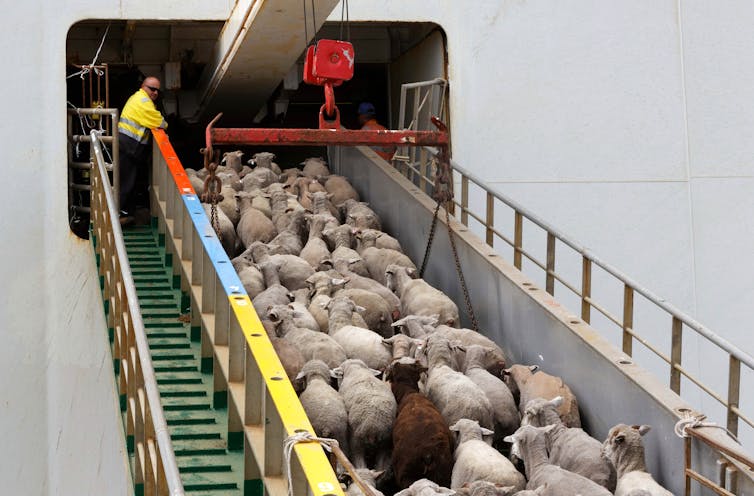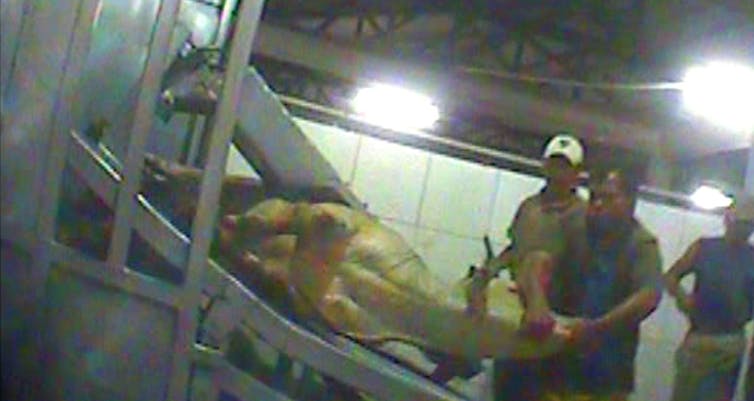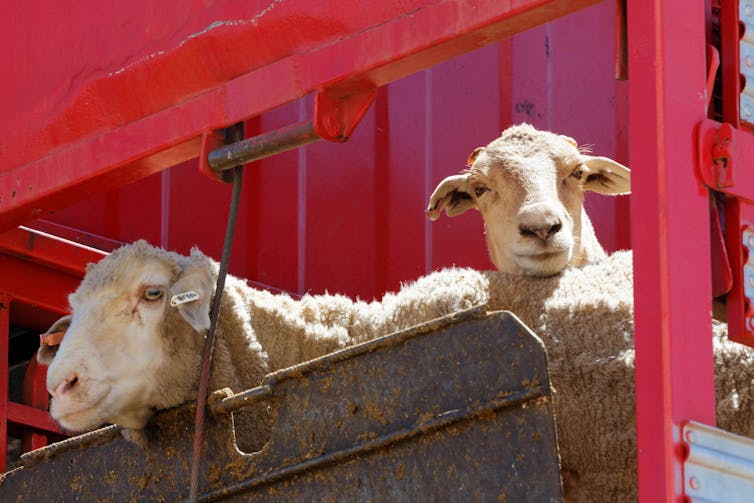Can Labor's animal welfare plan improve Australia's lacklustre record?
- Written by Paul McGreevy, Professor of Animal Behaviour and Animal Welfare Science, University of Sydney
Labor has released a six-point plan intended to re-establish national leadership on animal welfare.
This plan would reverse the direction set by the Abbot government, which withdrew funding from the Australian Animal Welfare Strategy (AAWS) and disbanded the entire Animal Welfare Unit within the Department of Agriculture. These moves made animal welfare chiefly the responsibility of the states and territories.
Read more: Can live animal export ever be humane?
Since then, the Coalition government has slightly redeemed itself, largely focusing on heat stress in live export, introducing new regulations around temperature. This renewed attention to livestock welfare could have far-reaching consequences if rolled out to other sectors of animal husbandry, such as land transport.
Labor has argued creating an independent office overseeing livestock welfare and a nationally consistent welfare strategy can improve Australia’s poor record on animal well-being.
A brand new office
Labor’s plan would create an independent office overseeing livestock welfare and pursue a nationally consistent welfare strategy. The first point of the plan commits Labor to establishing an independent Inspector-General of Animal Welfare (IGAW) and Live Animal Exports. Labor has pledged A$1 million a year to establish the IGAW as a statutory position operating independently within the federal Department of Agriculture.
The IGAW would report directly to the agriculture minister and advise on the protection of animals in all Commonwealth-regulated activities (which notably excludes racing and companion animals) with a focus on live exports and welfare standards and guidelines.
The Inspector-General would also work with the states and territories to establish an independent Office of Animal Welfare to oversee animal protection and welfare nationally.
 Labor plans to create an independent office that focuses on live exports.
Trevor Collens/AAP
Labor plans to create an independent office that focuses on live exports.
Trevor Collens/AAP
The independence of this office is particularly significant in light of the recent government-funded Futureye report on Australia’s shifting mindset on farm animal welfare, the Moss Review and the Productivity Commission report, all of which questioned whether the government has a conflict of interest when both supporting the agricultural industry and promoting good animal welfare standards.
The return of cooperation
Secondly, it has pledged to re-establish state and territory cooperation on animal welfare matters (as was the case under the former Labor government). This system saw the Commonwealth, states and territories cooperating on animal welfare matters to grant them a consistent national approach.
Thirdly, Labor will collaborate with state and territory governments, industry and animal welfare groups to “update and renew” (and hopefully fund) the Australian Animal Welfare Strategy, which has been in mothballs since September 2013.
Read more: Live sheep exporters get longer 'grace' period for sub-standard ships
The strategy facilitates round-table discussions among industry, governments, professional associations, service providers, researchers and welfare organisations, all volunteering their time to assess welfare problems and possible solutions.
Those of us who have contributed to AAWS meetings in the past generally agree that face-to-face collaborations with such a broad range of stakeholders were invaluable. The Animal Welfare League Australia has described the the AAWS as worth “tens of millions [to Australia], given the huge amount of pro bono and in-kind support the working groups provided.”
Transparency and change in live exports
Fourthly, Labor has pledged to conduct a review of the Exporter Supply Chain Assurance System (ESCAS). Introduced in May 2011, in response to an ABC Four Corners program that exposed horrific scenes of cruelty in Indonesian abattoirs, the ESCAS is designed to protect animal welfare from the farm gate to slaughter.
 Covert footage of animal cruelty in Indonesian abattoirs grabbed headlines in 2011.
Animals Australia/AAP
Covert footage of animal cruelty in Indonesian abattoirs grabbed headlines in 2011.
Animals Australia/AAP
The need for close scrutiny of such assurance schemes was highlighted last month when hundreds of Australian and New Zealand cattle died after being exported to Sri Lanka. This has led RSPCA Australia to repeat previous calls to extend ESCAS protections to breeding and dairy cattle.
On the other hand, it is unclear why there is any need to review ESCAS top to bottom as another point in Labor’s plan is to immediately ban the northern summer live sheep trade, and phase out live sheep trade entirely within five years.
Given 58% of Australians surveyed on the ABC’s Vote Compass wanted to see an end to live export, Labor may be accused of not going far enough in planning an end to all live exports and failing to support growth in on-shore meat processing, particularly in the north of Australia.
Regular farm reports
Finally, Labour has committed to more transparency and accountability in farm animal welfare matters by ensuring the Minister for Agriculture provides quarterly reports to the Parliament on:
- new and emerging markets
- the numbers of livestock exported
- allegations of breaches of animal welfare standards and investigations undertaken
- any actions taken for breaches of Australia’s animal welfare standards.
These would feed into the emerging calls for industries that use animals to maintain a social license to do so.
Read more: Why horse-racing in Australia needs a social licence to operate
Catching-up to do
Labor’s claim their plan will “confirm Australia as a leader in our region for the care and protection of animals” is a lofty goal – especially given how poorly Australia ranks in World Animal Protection’s international listing of animal welfare performance.
 World Animal Protection scrutinises government regulation against animal cruelty.
Trevor Collens/AAP
World Animal Protection scrutinises government regulation against animal cruelty.
Trevor Collens/AAP
Under this scheme, countries are scored on, among other attributes, recognition of animal sentience, the importance of animal protection as a social value within the country and government regulation against cruelty. On a scale from A to G, Australia currently has a C rating, on a par with China.
Currently, the costs of Australia’s dropping the ball on animal welfare issues are difficult to pin down. Monitoring animal welfare science and meeting community expectations, as proposed in the Labor plan, may prove critical for the next government, regardless of its leaning.
The cost of picking up the ball as animal welfare matures as a political issue may make Labor’s welcome, but modest pledges look like great value for money.
Read more: Stop the sheep trade in the northern summer, veterinarians say
Authors: Paul McGreevy, Professor of Animal Behaviour and Animal Welfare Science, University of Sydney





